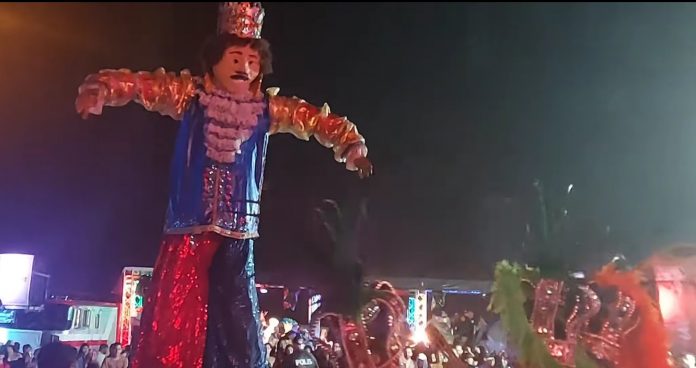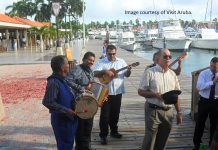(Oranjestad)—This past weekend, to mark the end of the children’s parade that took place Sunday in San Nicolas, locals gathered once more in the evening hours for Kimamento di Momito (burning of Momito). You may wonder who this Momito character is, why he plays a role during the carnival season, and why it’s tradition to set him on fire. Here is a quick folklore lesson explaining the burning of Momo/Momito on Aruba.
The Momo was first introduced on Aruba in 1954 by Henry Bethencourt (alias Heroudini), three years after its introduction on Curacao. According to Heroudini, the story of the king Momo refers back to the biblical time of Jonah and the Wale, during a time where sins plagued humans. God made it clear to the people that he would destroy the city unless they repented and stopped sinning. And so before the people began fasting, it was decided that there should be a kind of parade to bring closure to that era. In that parade, a masked king was seen walking along the spectators, a figure representing human sins. At the end of the parade, this masked king was burned, symbolizing the end of a sinful era.
Here in Aruba, this biblical story was also adapted into the folklore of King Momo/Momito during the carnival season. Although not as religiously charged, the burning of the king does represent an end to the two-month long festivities, and the beginning of a new spiritual cycle on the island. The burning of Momo takes place right after the final Grand Parade on the island, right before Lent.
To say goodbye to the carnival season, locals attend two different burnings of the king; First, the “Momito”, which happened this past Sunday after the children’s parade. Momito represents the end to the children’s carnival festivities (the “-ito” refers to something small, a.k.a, children). Momo is the adult version of the momito, and its burning takes place the same day after the final Grand Parade in Oranjestad.
This week will be the “last hurrah” of the carnival season, with the two Grand Parades left on the itinerary. If you want to say goodbye to this year’s carnival season with the locals, join us this coming weekend in San Nicolas and Oranjestad to celebrate the biggest parades yet!
Source: National Archeological Anthropological Memory Management.
















